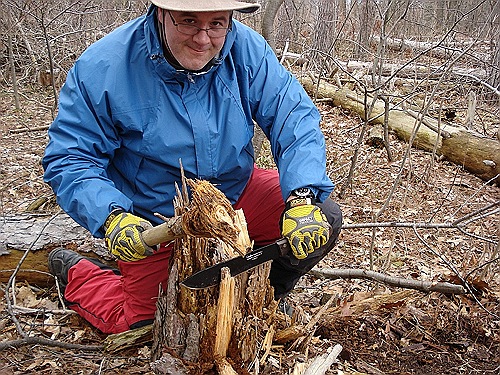3 Wintertime Knife Tips
16th Oct 2015
3 Wintertime Knife Tips
As we settle into our new Escanaba digs after the move from Oregon, we're watching the leaves turn and feeling a bit of a chill in the air. Both are reminders that the transplanted members of the KnivesShipFree team are about to experience our first real UP winter.
We can hardly wait -- bring it on.
For those of us who use our knives outdoors in these climes, winter changes the game. Here are a few things to remember when the wind blows frigid and the ground is white.
1. Mind your edges. When temperatures drop, stuff freezes. That includes wood, of course, which can become as hard as a rock.
Processing frozen wood for a fire or other bushcraft purposes can take a real toll on your edges. Even basic notching or whittling an icy stick will tax an edge more than you might expect. And with all of winter's other distractions -- like cold hands -- you may be less likely to feel an edge going away.
Be extra-vigilant, then, of your knives' edges in sub-freezing weather. Avoid using your blades on frozen wood unless you have no other options (and you may not). Carry your sharpening kit if you plan to be afield for any length of time, and get accustomed to using it in less-than-ideal wintertime conditions.

2. Fire is your friend. Although some would argue that this isn't strictly a knife thing, we believe that knives and firemaking go hand-in-hand. And the ability to quickly build a warm fire can be an especially valuable skill in the winter months.
Truth is, it might just save your life.
Naturally, you should carry a firesteel and tinder at the very least, or better yet a complete fire kit. Don't forget, though, that building a fire with numb fingers in a snowy landscape is much more challenging than it was the last time you did it, on a dry summer day. You should practice your firemaking skills in all conditions, and winter is an excellent time to do that.
3. Watch out for moisture. Remember the last time you were surprised to find a spot of rust on a blade, or when you tried to deploy your favorite slipjoint but the pivot wouldn't budge, and you wondered, "How'd that happen?"
Moisture, unless it's dealt with, will lead to corrosion, and wintertime is moisture's favorite season. Whether it comes from snow, ice or condensation, be sure to dry and oil your blades after a cold-weather outing.
Condensation can be particularly insidious. It's the same stuff that forms on your eyeglasses when you go from the wintry woods into a warm cabin, and there's an easy way to prevent it. Simply slip your knife into a plastic bag before bringing it indoors, and leave it there until it reaches room temperature.
Bonus tip: If your knife's leather sheath gets wet, don't dry it by leaning it against a radiator or propping it up next to a campfire -- you'll ruin it. Simply let it air-dry.
 Enjoying the "3 from KnivesShipFree" series? Maybe learning a thing or two?
Enjoying the "3 from KnivesShipFree" series? Maybe learning a thing or two?
Great -- that's exactly what we have in mind. And remember, you can check out all the articles in the series anytime just by clicking on that snazzy "3 from KnivesShipFree" graphic.

